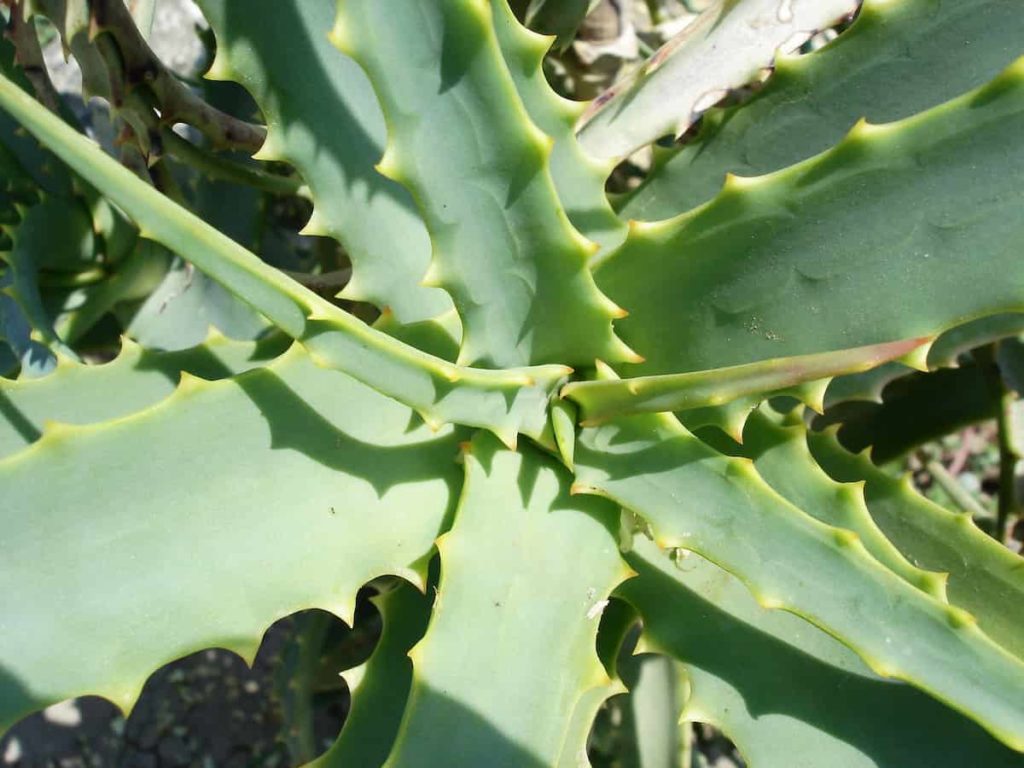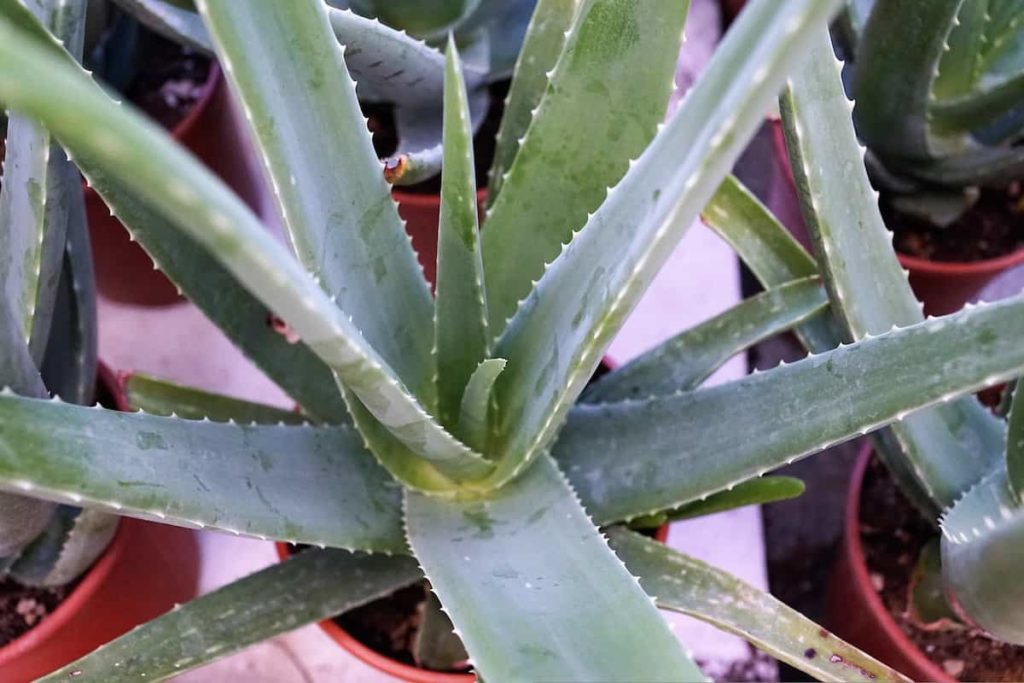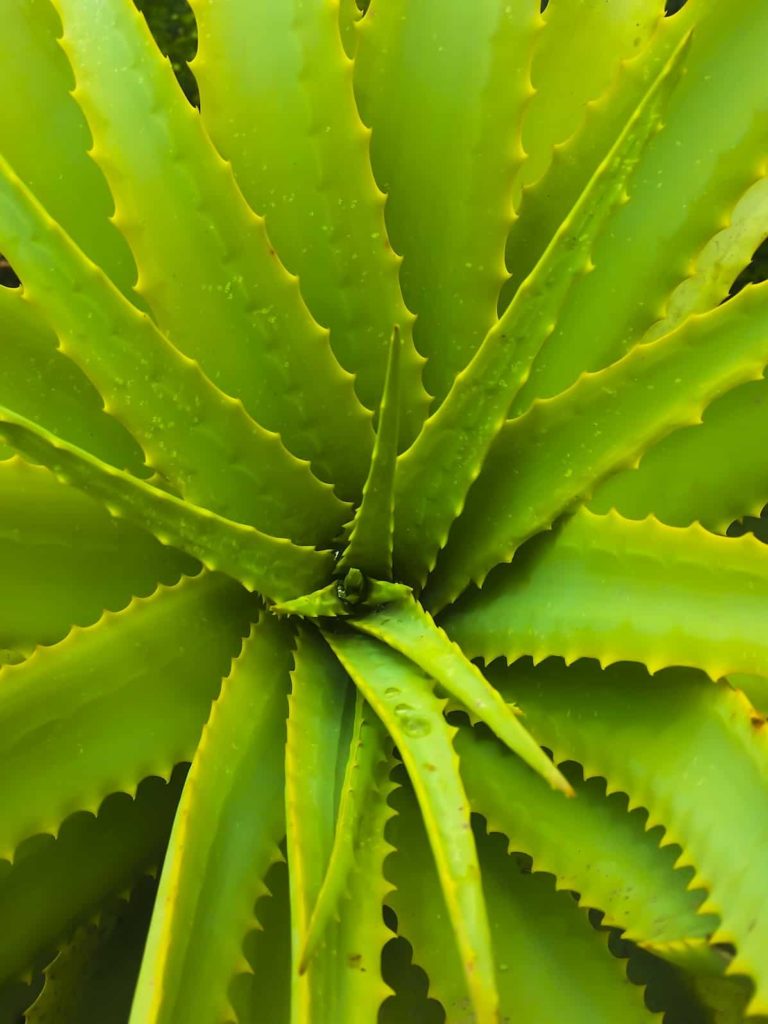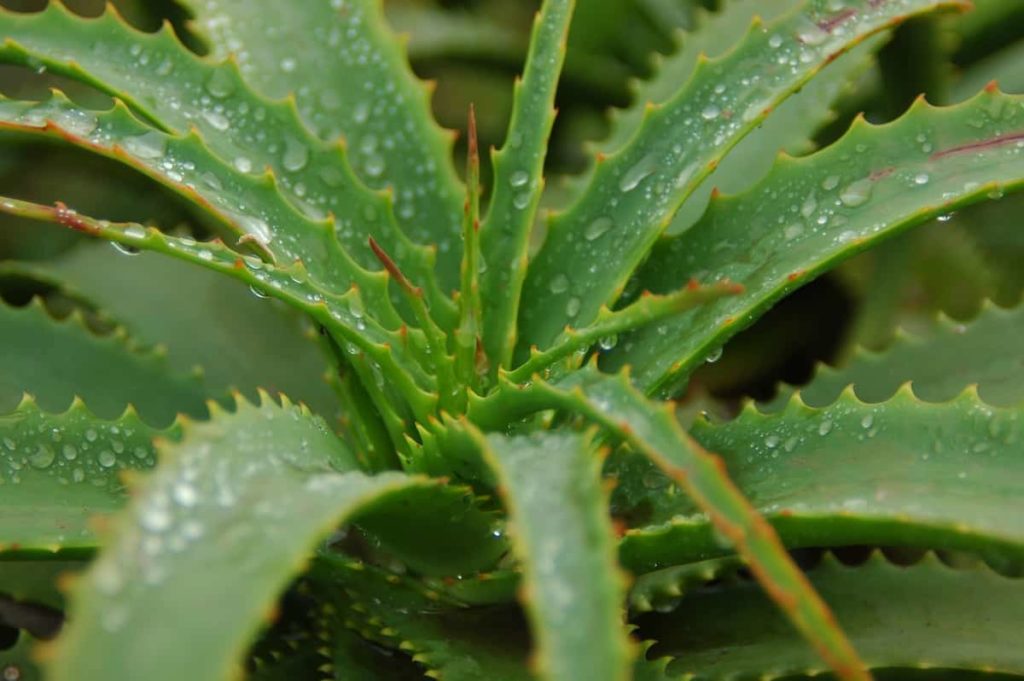You can grow Aloe plants outdoors in dry climates and houseplants in cold, humid areas. Aloe plants have a circular, rosette shape with leaves three feet long. You can propagate Aloe Vera in different ways. It can be from offshoots called pups or from the leaf cutting. Propagating from pups is the easiest way and has the highest success rate. If you try to propagate the Aloe Vera from a cutting placed in water, it will rot before the roots grow. The chances of growing cutting in potting soil are much better but require patience.
How to propagate Aloe Vera
Should I propagate Aloe Vera in water or soil?
Aloe Vera will perform better in the long term planted in the soil, but the water-based growing method is still helpful in keeping the Aloe alive in the short term. Aloe plants can only survive for a few weeks in the water, so if you’re short of time or need to go to the store and pick up supplies to plant them in the soil, it’s a great way to keep your Aloe alive in the meantime.
When to propagate Aloe Vera
You can propagate Aloe Vera plants at any time during the year, but you’ll have to wait until the pups mature enough to remove it. The best way to tell if the pups are ready to separate is to check the roots of the Aloe plant. To do this, carefully slide the entire plant out of the pot. Then brush the dirt until you can see the bottoms of the pups. Just remove those who have their root system because Aloe pups without roots may not be able to survive on their own.
From offsets
When it comes to knowing how to propagate Aloe Vera without roots, you should focus on propagation from the offset. This will lead to a new plant almost immediately. Offsets or offshoots are clones of the mother plant. They are produced by mature plants, such as baby pups. To understand how Aloe can create an offshoot, you must understand its root structure.
The roots live in the soil near the top. Thus, the roots are better able to absorb moisture and store it for later use. The roots produce the circumference of an earthworm, which will produce new growth branches over time. These new pups aren’t just extensions of the mother plant. They simply become completely new plants that can be removed and replanted. This is why offsets are the easiest and fastest way to grow new Aloe Vera plants.
In case you missed it: 19 Common Aloe Vera Plant Problems: How to Fix Them, Solutions, and Treatment

From the leaf
You can grow an Aloe Vera plant from a leaf; the chances of taking a leaf root are very low. Aloe Vera leaves contain much moisture and rot before taking root. Unlike other succulents and cacti, growing Aloe Vera from just one leaf is difficult. The chances of the leaves taking root and growing in a healthy plant are slim.
Necessary materials required for Aloe Vera propagation
- A healthy Aloe plant with a pup or leaf
- A sharp, clean knife to cut
- A pot or container with drainage holes
- Well-drained garden soil, preferably a succulent blend
- Rooting hormone (optional)
Growing Aloe Vera on ground
Soil for growing Aloe Vera
You should mix the substrate before you can propagate Aloe Vera. Aloes can only grow into the suitable substrate, and whether you use cutting or offshoot propagation, the substrate in the pot must meet specific requirements. In conventional garden soil, leaf cuttings will only die or rot immediately, which you want to avoid.
Some of the substrate mixtures suitable for Aloe Vera
- You can mix three parts cactus soil, 1 part perlite, and 1 part lava granulate.
- You can mix 2.5 parts succulent soil, 1 part lava granulate, and 1 part vermiculite,
- You can mix 2.5parts potting soil, 1 part lava granulate, 1 part pumice gravel, and half part quartz sand.
These compounds offer the conditions necessary for young Aloe plants to grow effectively. Roots can get immediate support, and Aloes can also look forward to a rich supply of nutrients and fresh air without being exposed to water flow. Mix the ingredients and check the density of the substrate by squeezing it once. Finally, check the pH value. It should be between 6.0 and 8.0. Add some garden lime if the value isn’t high enough.
Propagation of Aloe Vera from pups
The roots of thick Aloe Vera plants can be difficult to untangle without disturbing much, so you may need to be highly patient. You don’t break any of the pup’s delicate roots accidentally. Brushing and stirring as much dirt from the root system as possible will help make the Aloe plant a little easier to split. Cut the pup from the main plant; if the stem of the pup is still attached to the mother plant, break the connection with a sharp knife or pair of clippers. This will make the task of untangling their roots much easier.
In case you missed it: How to Prepare the Soil for Aloe Vera Plants: Best Soil Mix, pH, Compost, and Recipe

Untangle the roots of the pups, tease slowly, and detangle the roots of the pups to separate them, do not try to break any root in the process. Use rooting hormone for immature pups; if any Aloe offsets you’ve removed have many roots, have only small roots on them, or are broken, you can use the rooting hormone to help develop strong roots faster. Dip the end in the rooting powder before sticking it to the soil. Once you’ve removed the pup, you can easily slide the mother plant back into the original pot and move it above the fresh Aloe Vera potting soil. Otherwise, this is a great time to repot it in a new container.
Propagation of Aloe Vera from leaf
Growing Aloe Vera from leaf has a much lower success rate than division. You may want to try leaf cutting if you have a healthy leaf that’s broken or if your Aloe doesn’t have an offset. Cut a portion of the leaf from your chosen mother plant with a sharp, clean knife. Unlike most succulents, the leaf doesn’t need to be removed at the joint. You can only remove a few inches or almost the entire leaf on top. You should dry the cutting for a few days.
There’s a good chance that it will just rot instead of drying. Unfortunately, this means the cutting isn’t going to grow, and you’ll need to start with a new cutting. Fill a container with well-drained potting soil and keep the cutting straight. You can place the leaf-cutting on top of the soil, especially if it’s a large cutting.
Rooting hormone is unnecessary for leaf cutting, so you won’t need it here. They will take root on their own. Mist the cutting with water, but not soaking, keeps the soil moist. Once your plants have established roots and new leaves and are growing reliably, adjust to a watering schedule that suits your plant’s needs. Remember that the soil should quickly drain excess water for healthy plant growth.
Growing Aloe Vera in water
You can grow Aloe Vera in water by dipping the roots and suspending the plant from above using a bulb vase or an inverted water bottle. Like hydroponic systems, this method of water growing requires special consideration for potential problems such as lighting, fertilization, and root rot or algae growth. You should clean the roots of your Aloe plant in water to remove any soil.
If you’re dividing an existing plant, untangle the roots to remove the pups from the mother. Make sure each pup has some roots attached. You must filter or distill water to grow Aloe Vera. Put the Aloe pup in a vase of a bulb filled with water. You should place roots partially and leave some in front of the air so they can also carry oxygen. You’ll need to replace the water in a vase or bottle regularly. It refreshes the nutrients available to the Aloe and prevents the formation of algae.
In case you missed it: Growing Aloe Vera in Pots from Cuttings, Seed, Division

Tips for maintaining Aloe Vera in water
For your Aloe to grow rapidly in water, ensure its needs for light, oxygen, and fertilizer are met. Aloe plants like bright but indirect light. Placing them a few feet behind the east or south window will work very well. They’ll get plenty of sunlight, but none that’s intense enough to burn their fleshy leaves.
You should use filtered or distilled water in your bottle or vase and replace it regularly. Less fertilizer is better than most plants that grow in water and are more sensitive to excess amounts of certain nutrients. You should not completely submerge the bottom of the Aloe into the water. You should leave an inch of airspace between the waterline and the base of the stem where the roots originate.
Tips for better propagation results
You should pay extra attention to the propagation medium, no matter your chosen method. A regular potting mix won’t help your Aloe plants retain water and dry properly. Whether you grow Aloe Vera from offsets or leaf cuttings, you’ll need to equip yourself with a sharp knife. Similarly, advise you to clean the knife after every cut you make to prevent any future infections on the mother plant or future ones.
In case you missed it: How to Build Trellis for Gourds: A Step-by-Step Planting Guide for Beginners

Aloe plants perform at their best in pots coming in a specific size. The more room they get, the better root growth, as they will have enough space to grow as they wish. However, containers that are much larger than small new plants can encourage rot. They will need deep water for the first few days until the new Aloe plants have roots. Still, that doesn’t mean you’ll need to drown them out because succulents don’t like soggy conditions.
After several weeks or a few months, when you see the new growth, it will be the moment when you know your propagation was successful. It’s best to keep your new Aloe plants away from strong direct sunlight but ensure they still receive much indirect light. The most important environmental requirement for growing succulents is lighting; many succulent growers fail to provide enough light to prepare their plants healthily.
Therefore, the ideal location for the Aloe plant is a windowsill where it will receive at least six hours of indirect light daily. When they don’t get enough light, Aloe will become leggy and vulnerable in their attempt to reach the light. Your home may be an ideal environment for Aloe plants, but it’s important to remember that even a small apartment can have multiple microclimates. Some windows will become hotter in the summer, depending on the orientation. The ideal temperature for Aloe plants is between 10°C and 24°C.
In case you missed it: How to Get Rid of Bugs on Indoor Plants: Simple Tips, Ideas, and Techniques

Conclusion
Aloe plants are also one of the easiest to grow. The good news is that there are many ways in which you can get more Aloe plants, such as through offset (splitting) and leaf cutting. Prized for their peculiar but stunning appearance, Aloe plants are certainly the most popular and admired ornamental succulents worldwide.
- How to Grow Hibiscus from Flower
- Plantation Ideas for Home Decoration: A Beginners Guide
- Flower Garden Designs and Layouts for Beginners
- Planting and Spacing Techniques in Papaya: A Beginner’s Guide
- Growing Gold: Essential Techniques for Planting Pineapples
- How to Make Kalanchoe Plant Bushy: Home Remedies and Solutions
- 11 Reasons Why Your Gardenia is Not Blooming: Home Remedies and Solutions
- Eco Elegance: The Guide to Designing a Drought-Tolerant Landscape
- Gardening on a Slope: Strategies for Hillside Landscaping
- Nourish and Flourish: Top Organic Mulches for Thriving House Plants
- Everything You Want to Know about Indian Mogra Flower: Discover Uses and Growing
- Green Thumb Success: Expert Tips for Cultivating Greenhouse Pumpkins All Year Round
- Maximize Growth & Flavor: The Ultimate Guide to Companion Planting in Herb Gardens
- How to Control Rhododendron Problems Naturally: Home Remedies and Organic Ways to Fix Them
- Natural Magic: The Remarkable Benefits of Cinnamon for Plants
- Best Steps to Revive Dying Tulip with Natural and Organic Treatment
- 10 Reasons Why Your Angel Trumpet is Not Blooming: Remedies and Treatment
- How to Fix Periwinkle Leaf and Flower-Related Problems: Natural Remedies and Solutions
- How to Fix Zinnias Leaf and Flower Problems: Discover Natural and Home Remedies
- Organic Steps to Induce Lemon Tree Flowers: A Comprehensive Guide
- Bloom Booster: Crafting the Perfect Homemade Bougainvillea Fertilizer
- Optimizing Growth: A Guide to Applying NPK Fertilizer for Potted Plants
- 10 Best Homemade Fertilizers for Rubber Plant: DIY Recipes and Application Method
- How to Boost Female Pumpkin Flowers: Effective Steps for More Flowers and High Yields
- Transform Your Indoor Garden: Top Benefits of Pink Salt for Houseplants
- 10 Best Homemade Fertilizers for Peacock Plants (Calathea): Easy DIY Guide
- Unlock Blooms: 9 Reasons Why Your Potted Chrysanthemum is Not Blooming
- 8 Reasons Why Your Potted Hibiscus is Not Blooming: Fix it with Simple Solutions
- Unlock Blooms: 9 Key Reasons Your Potted Frangipani Won’t Flower
- 10 Reasons Why Is My Ice Plant Not Blooming: Remedies and Treatment
- 10 Reasons Why My Potted Hydrangea Not Blooming: Treatment and Remedies
- 10 Reasons Why is My Wisteria Not Blooming: Remedies and Treatment
- 10 Reasons Why is My Goldfish Plant Not Blooming: Remedies and Treatment
- Maximize Your Space: Ultimate Guide to Balcony Gardening with Grow Bags
- 10 Reasons Why Your Iris is Not Blooming: Remedies and Treatment
- 10 Reasons Why Your Anthurium Plant is Not Blooming: Treatment and Remedies
